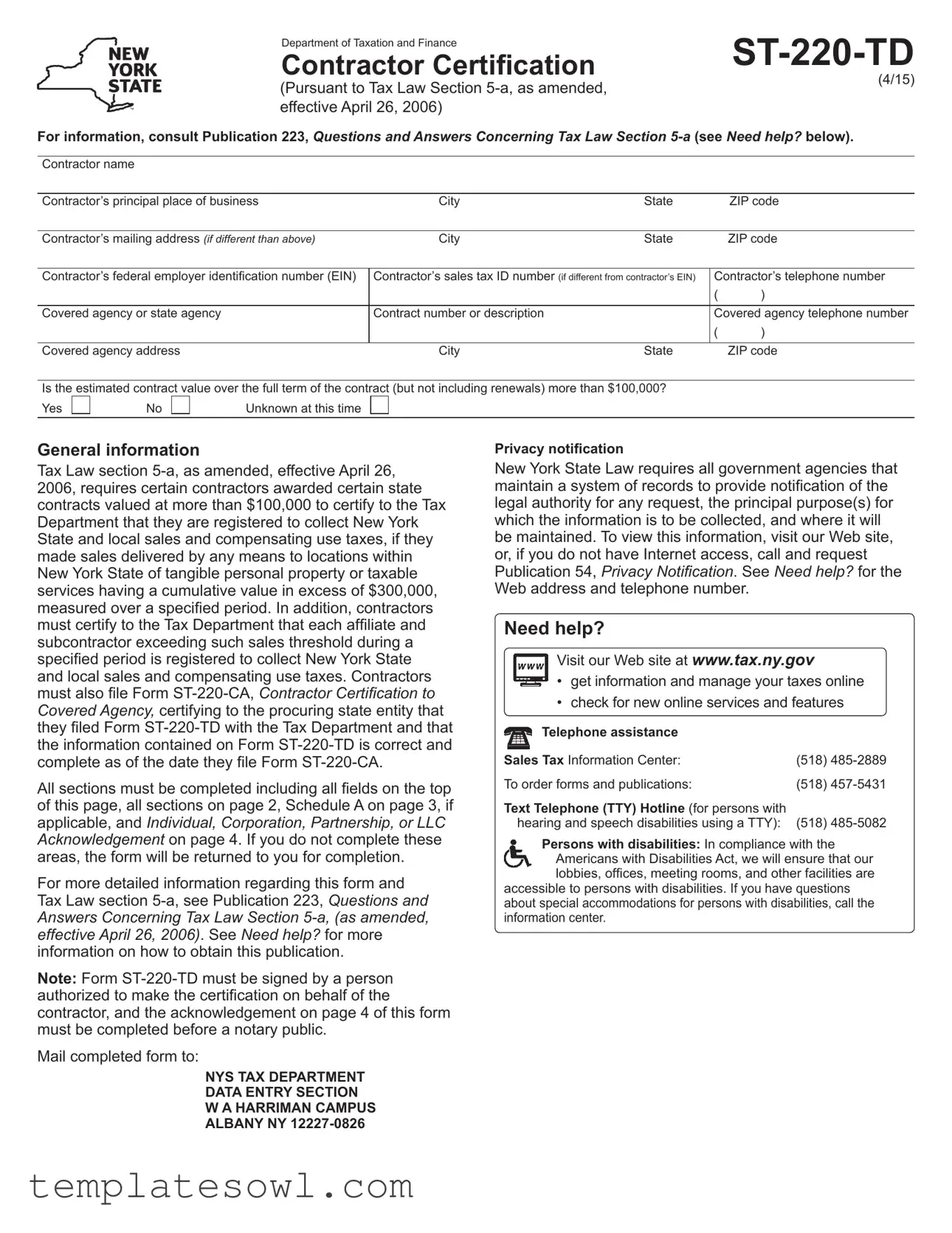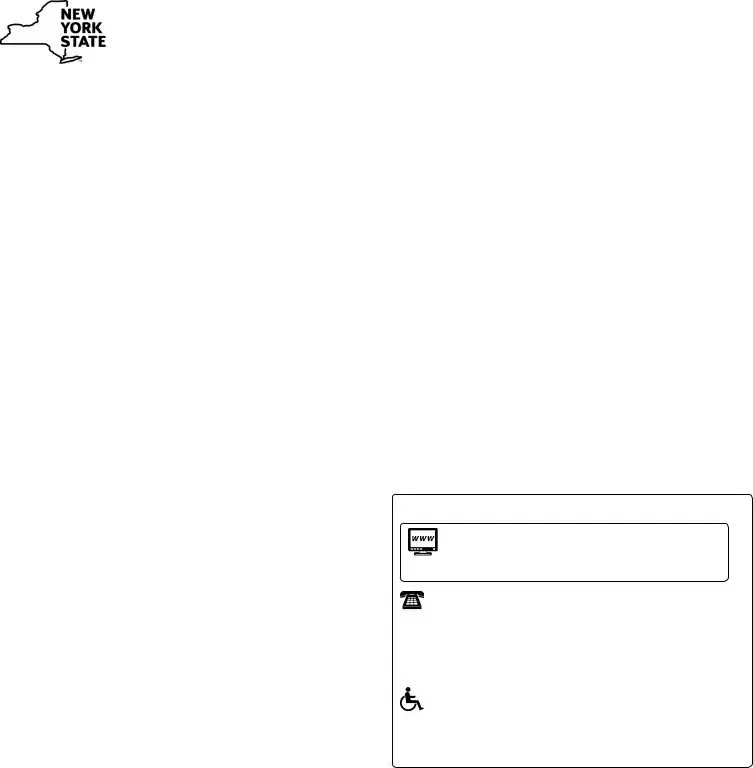Page 2 of 4 ST-220-TD (4/15)
I, |
, hereby affirm, under penalty of perjury, that I am |
|
(name) |
|
(title) |
of the above‑named contractor, and that I am authorized to make this certification on behalf of such contractor.
Complete Sections 1, 2, and 3 below. Make only one entry in each section.
Section 1 – Contractor registration status
G The contractor has made sales delivered by any means to locations within New York State of tangible personal property or taxable services having a cumulative value in excess of $300,000 during the four sales tax quarters which immediately precede the sales tax quarter in which this certification is made. The contractor is registered to collect New York State and local sales and compensating use taxes with the Commissioner of Taxation and Finance pursuant to Tax Law sections 1134 and 1253, and is listed on Schedule A of this certification.
G The contractor has not made sales delivered by any means to locations within New York State of tangible personal property or taxable services having a cumulative value in excess of $300,000 during the four sales tax quarters which immediately precede the sales tax quarter in which this certification is made.
Section 2 – Affiliate registration status
G The contractor does not have any affiliates.
G To the best of the contractor’s knowledge, the contractor has one or more affiliates having made sales delivered by any means to locations within New York State of tangible personal property or taxable services having a cumulative value in excess of $300,000 during the four sales tax quarters which immediately precede the sales tax quarter in which this certification is made, and each affiliate exceeding the $300,000 cumulative sales threshold during such quarters is registered to collect New York State and local sales and compensating use taxes with the Commissioner of Taxation and Finance pursuant to Tax Law sections 1134 and 1253. The contractor has listed each affiliate exceeding the $300,000 cumulative sales threshold during such quarters on Schedule A of this certification.
G To the best of the contractor’s knowledge, the contractor has one or more affiliates, and each affiliate has not made sales delivered by any means to locations within New York State of tangible personal property or taxable services having a cumulative value in excess of $300,000 during the four sales tax quarters which immediately precede the sales tax quarter in which this certification is made.
Section 3 – Subcontractor registration status
G The contractor does not have any subcontractors.
G To the best of the contractor’s knowledge, the contractor has one or more subcontractors having made sales delivered by any means to locations within New York State of tangible personal property or taxable services having a cumulative value in excess of $300,000 during the four sales tax quarters which immediately precede the sales tax quarter in which this certification is made, and each subcontractor exceeding the $300,000 cumulative sales threshold during such quarters is registered to collect New York State and local sales and compensating use taxes with the Commissioner of Taxation and Finance pursuant to Tax Law sections 1134 and 1253. The contractor has listed each subcontractor exceeding the $300,000 cumulative sales threshold during such quarters on Schedule A of this certification.
G To the best of the contractor’s knowledge, the contractor has one or more subcontractors, and each subcontractor has not made sales delivered by any means to locations within New York State of tangible personal property or taxable services having a cumulative value in excess of $300,000 during the four sales tax quarters which immediately precede the sales tax quarter in which this certification is made.
Sworn to this |
|
day of |
|
, 20 |




